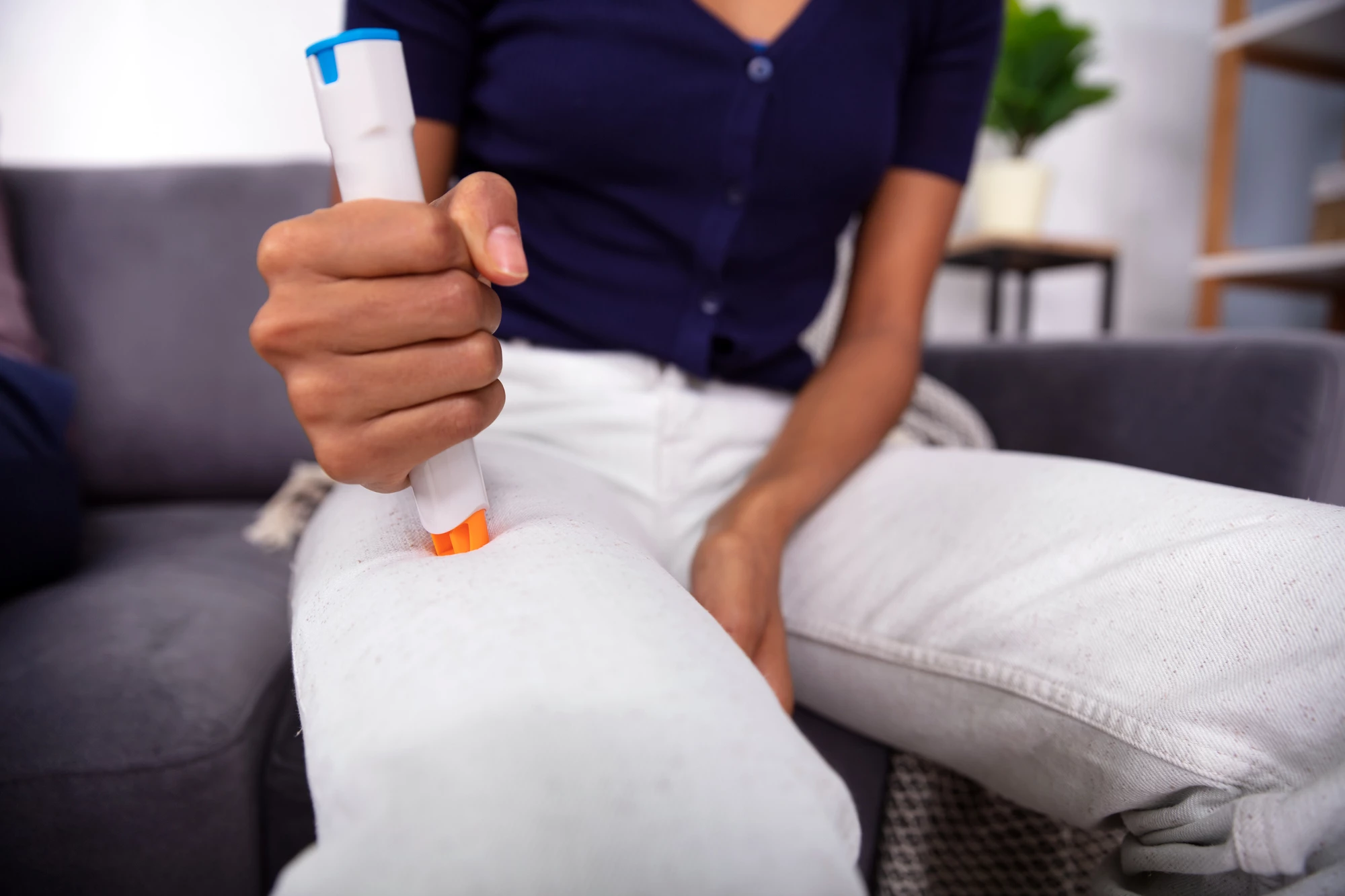Omalizumab, currently used to treat asthma, has been shown to substantially reduce the risk of potentially life-threatening reactions in people aged one and older with multiple common food allergies, including peanuts, following accidental exposure. While not a cure, the now FDA-approved drug could improve the quality of life for food allergy sufferers.
The incidence of food allergies has risen globally over the last decade, affecting approximately one in 10 adults and one in 12 children. The cause of the rise is unknown, but several theories have been proposed. The ‘hygiene hypothesis’ suggests that an excessive emphasis on cleanliness has contributed to sensitivities that weren’t seen when kids were allowed to play in (and, yes, eat) dirt. The ‘dual allergen exposure hypothesis’ holds that food particles that enter the body through broken skin cause the production of antibodies, whereas oral ingestion causes tolerance. This theory fits the observation that eczema, which causes dry, cracked and itchy skin, is the leading risk factor for developing food allergies.
What is known is that, from an immune system perspective, food allergies are driven by immunoglobulin E (IgE) antibodies, which sets them apart from lactose intolerance or autoimmune diseases such as celiac disease. And, unlike intolerances, food allergies have the potential to be life-threatening. The situation can be more dire for people with multiple food allergies, especially in the context of accidental exposure.
A new study led by Johns Hopkins Children’s Center has investigated the effectiveness of an injectable drug to reduce the likelihood of life-threatening reactions in people with allergies to peanuts and other foods as they gradually increased consumption of foods they were allergic to.
“The day-to-day life of patients with food allergy is consumed by fear of accidental exposure to food allergens,” said Robert Wood, lead author of the study and Director of Pediatric Allergy and Immunology at Johns Hopkins Children’s Center. “Our findings have the potential to be very meaningful, and potentially even life-changing, for people with food allergies.”

The researchers recruited 180 participants aged one to 55 with an allergy to peanuts and at least two other trial-specified foods: cashew nuts, milk, eggs, walnuts, wheat, and hazelnuts. The participants were randomly assigned to receive omalizumab or a placebo injected under the skin every two to four weeks for 16 to 20 weeks. Doses were based on weight and IgE levels. All but three of the participants were 17 or younger.
Omalizumab (sold as Xolair) was approved by the FDA in 2003 for treating moderate-to-severe persistent allergic asthma. It works by attaching to IgE, stopping the antibodies from attaching to immune cells, such as mast cells, that release histamine and cause an allergic reaction.
After 16 weeks, 66.9% of those treated with omalizumab achieved the primary endpoint, tolerating 600 mg or more of peanut protein (equal to about 2.5 peanuts) without moderate-to-severe allergic symptoms, compared to 6.8% who received a placebo.
“A majority of people not only reached the primary endpoint of 600 mg or more of peanut, an amount that exceeds most accidental exposures, but also the majority of participants tolerated 4,000 mg of peanut protein, which is equivalent to about 15 peanuts,” Wood said.
Almost 50% could consume a cumulative dose of 6,044 mg of peanut protein following omalizumab treatment, the equivalent of about 25 peanuts. Tolerance of other food also increased, compared to the placebo group: 41% vs 3% for cashews, 66% vs 10% for milk, and 68% vs 0% for eggs. About 69% of participants tolerated a cumulative dose of 1,044 mg of two foods, and about 47% tolerated three.
“This is unique because we found omalizumab is effective for seven different food allergens,” said Wood.
The first 60 study participants moved on to a 24-week extension phase of the trial to assess the longer-term effects of the drug. The researchers found that most participants’ allergy reaction threshold remained the same or increased when they continued receiving omalizumab during this period. The drug was found to be safe, aside from more injection-site reactions in the omalizumab group.

The researchers point out that while the study’s findings indicate that omalizumab is safe and effective, there was “substantial variability” in responses among individual participants. Indeed, 14% couldn’t tolerate even 30 mg of peanut protein. This means that EpiPens must still be carried and not thrown away just yet. The study sample was also mostly White and non-Hispanic, meaning the results are limited in generalizability. Further studies are needed to assess the drug’s effectiveness in diverse populations.
Nonetheless, based on the study’s findings, in mid-February, the FDA approved the use of omalizumab for IgE-mediated food allergy in adults and children aged one and older for the reduction of allergic reactions, including anaphylaxis, that may occur with accidental exposure to one or more foods.
“This newly approved use for Xolair will provide a treatment option to reduce the risk of harmful allergic reactions among certain patients with IgE-mediated food allergies,” said Kelly Stone, associate director of the Division of Pulmonology, Allergy, and Critical Care in the FDA’s Center for Drug Evaluation and Research. “While it will not eliminate food allergies or allow patients to consume food allergens freely, its repeated use will help reduce the health impact if accidental exposure occurs.”
The study was published in the New England Journal of Medicine.
Source: Johns Hopkins Medicine







